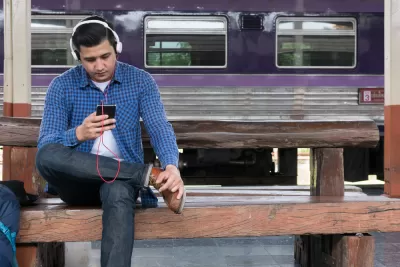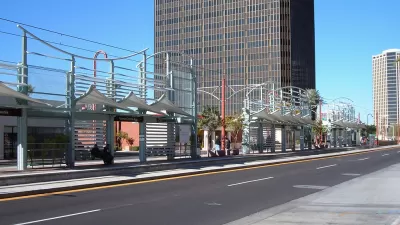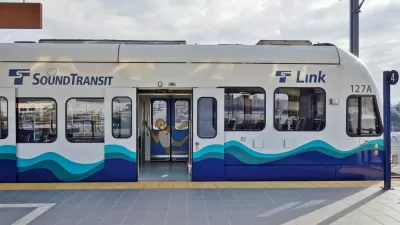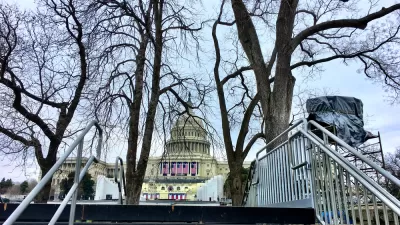The Federal Transit Administration is still holding much of the funding promised by Congress since 2017. It's unlikely that anyone likely to vote for Trump again in 2020 is losing any sleep over money not spent on public transit infrastructure.

"Congress has allocated about $4 billion for new transit projects since 2017. But the federal Department of Transportation has handed out just 30 percent of the available funds. About $2.7 billion remains to be distributed to more than two dozen cities that are expecting grants," according to Schmitt.
This isn't the first time transit advocates, led by Transportation for America, have raised alarms about the federal government's reluctance to disburse promised transit funds. Transportation for America launched a countdown clock in August 2018 to track missing transit funds, and some promised funding began to make its way to local and state agencies late in the year—significantly later than the tardy bell.
The Federal Transit Administration (FTA), is "failing to administer the grant program in good faith and in a timely fashion," according to a statement by Transportation for America reported by Schmitt.
Still unresolved, according to Schmitt: whether the delays are driven by ideology or dysfunction.
FULL STORY: Trump Administration Continues Funny Business with Transit Funding

Alabama: Trump Terminates Settlements for Black Communities Harmed By Raw Sewage
Trump deemed the landmark civil rights agreement “illegal DEI and environmental justice policy.”

Study: Maui’s Plan to Convert Vacation Rentals to Long-Term Housing Could Cause Nearly $1 Billion Economic Loss
The plan would reduce visitor accommodation by 25% resulting in 1,900 jobs lost.

Why Should We Subsidize Public Transportation?
Many public transit agencies face financial stress due to rising costs, declining fare revenue, and declining subsidies. Transit advocates must provide a strong business case for increasing public transit funding.

Paris Bike Boom Leads to Steep Drop in Air Pollution
The French city’s air quality has improved dramatically in the past 20 years, coinciding with a growth in cycling.

Why Housing Costs More to Build in California Than in Texas
Hard costs like labor and materials combined with ‘soft’ costs such as permitting make building in the San Francisco Bay Area almost three times as costly as in Texas cities.

San Diego County Sees a Rise in Urban Coyotes
San Diego County experiences a rise in urban coyotes, as sightings become prevalent throughout its urban neighbourhoods and surrounding areas.
Urban Design for Planners 1: Software Tools
This six-course series explores essential urban design concepts using open source software and equips planners with the tools they need to participate fully in the urban design process.
Planning for Universal Design
Learn the tools for implementing Universal Design in planning regulations.
Smith Gee Studio
Alamo Area Metropolitan Planning Organization
City of Santa Clarita
Institute for Housing and Urban Development Studies (IHS)
City of Grandview
Harvard GSD Executive Education
Toledo-Lucas County Plan Commissions
Salt Lake City
NYU Wagner Graduate School of Public Service





























